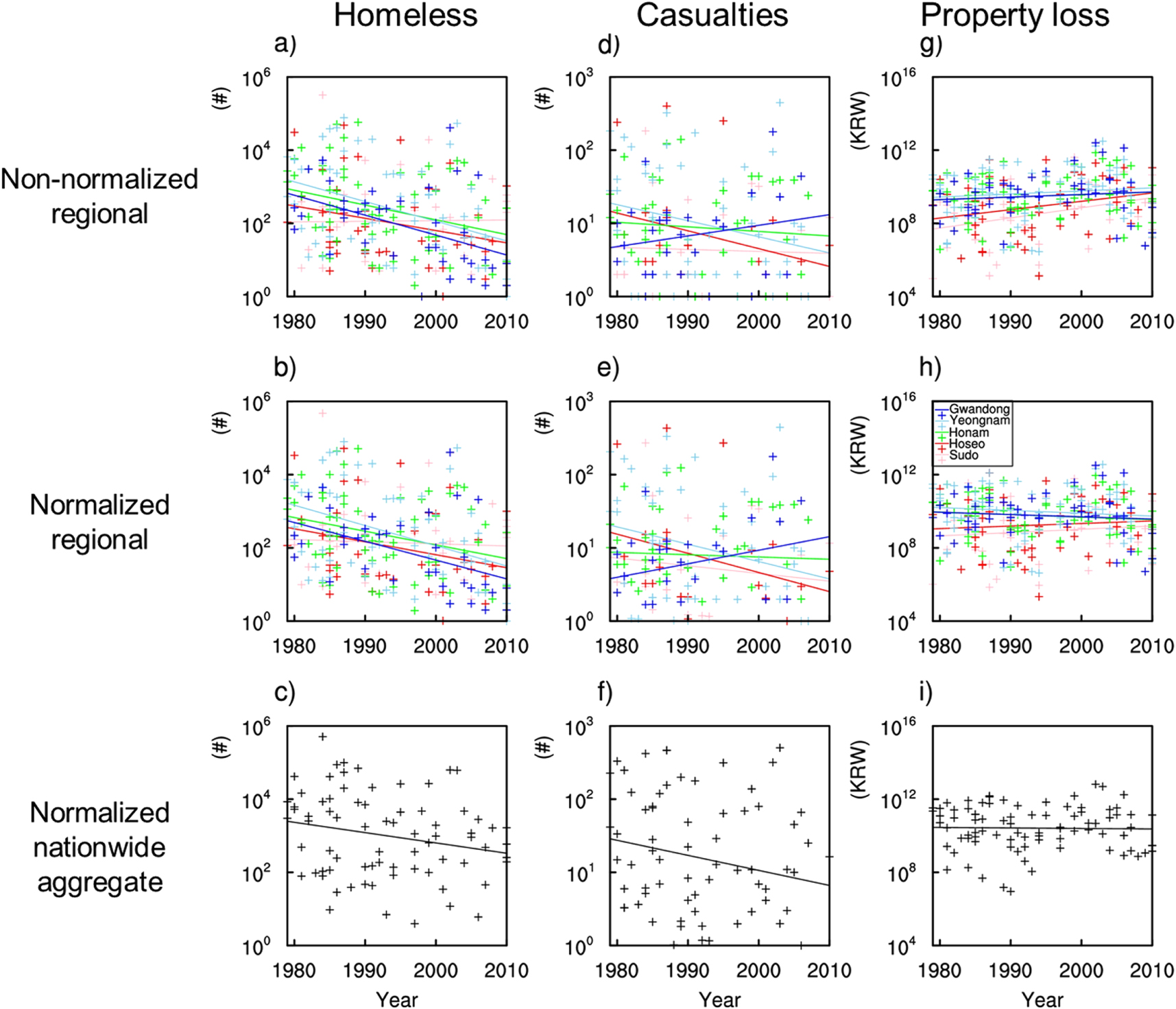Park, D.-S. R, C.-H. Ho, C. C. Nam, and H.-S. Kim,, : Evidence of reduced vulnerability to tropical cyclones in the Republic of Korea. Env. Res. Lett., Vol. 10, No. 5 , http://dx.doi.org/10.1088/1748-9326/10/5/054003
Key Points
Abstract
On average, three tropical cyclones (TCs) affect the Republic of Korea each year, causing extensive damage. To alleviate the TC-induced disasters, the Korean government has invested nearly 4% of its annual budget in recent decades in prevention efforts; however, the effectiveness of this costly program has not been evaluated. This study determined whether any evidence shows a reduced vulnerability to TCs in Korea over 1979–2010 by utilizing multi-linear regression. Homelessness, casualties, and property losses were individually examined. These explained variables were normalized into the socio-economic circumstances of 2005 before the regression to eliminate the effect of changing exposure by dealing with population and wealth at provincial levels. Three potential explanatory variables based on nationwide weather-station data were considered, including the maximum wind, maximum rainfall, and number of affected stations over each TC’s damaging period. In addition, the annual per capita income, showing a quasi-linear increasing tendency, was used as an additional explanatory variable to examine how vulnerability is altered. The results revealed that each empirical model of homelessness, casualties, and property losses can account for 47%, 57%, and 57% of each variance, respectively, which is highest when considering all four explanatory variables. Consistently negative coefficients of the per capita income terms for all damage types suggest that the vulnerability to TCs has been significantly reduced. This finding appears to be partly the result of the national prevention effort, although it also can be attributed to other unintended adaptation factors, such as building codes, industrial structures, and land use.
Key Figure
Time series of the (a)–(c) number of homeless, (d)–(f) number of casualties, and (g)–(i) amount of property loss for each TC landfall case. Uppermost, center, and lowermost rows indicate non-normalized, normalized regional losses, and normalized nationwide aggregate losses, respectively. Y-axis is a log scale.
Acknowledgments
This work was funded by the Korea Ministry of Environment as the Climate Change Correspondence R&D Program and by the National Research Foundation of Korea (NRF-2013R1A1A2064211). The authors are grateful to Mr Hee-Dong Yeo and Hyeong-Oh Cho for their preliminary calculations. The authors also appreciate many helpful comments from Professor Laura Bakkensen at the University of Arizona and Dr Jinwon Kim at the University of California, Los Angeles.
